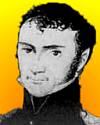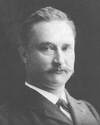 | TODAY IN SCIENCE HISTORY NEWSLETTER - 16 DECEMBER |
| Book of the Day | ||
|
| Quotations for Today | |
 | Never doubt that a small group of thoughtful, committed citizens can change the world; indeed, it is the only thing that ever has. |
 | Almost all the world is natural chemicals, so it really makes you re-think everything. A cup of coffee is filled with chemicals. They've identified a thousand chemicals in a cup of coffee. But we only found 22 that have been tested in animal cancer tests out of this thousand. And of those, 17 are carcinogens. There are ten milligrams of known carcinogens in a cup of coffee and thats more carcinogens than youre likely to get from pesticide residues for a year! - Bruce Nathan Ames, American biochemist and molecular biologist (born 16 Dec 1929). |
| Compounds formed by chemical attraction, possess new properties different from those of their component parts... chemists have long believed that the contrary took place in their combination. They thought, in fact, that the compounds possessed properties intermediate between those of their component parts; so that two bodies, very coloured, very sapid, or insapid, soluble or insoluble, fusible or infusible, fixed or volatile, assumed in chemical combination, a shade or colour, or taste, solubility or volatility, intermediate between, and in some sort composed of, the same properties which were considered in their principles. This is an illusion or error which modern chemistry is highly interested to overthrow. | |
| Quiz | |
| Before you look at today's web page, see if you can answer some of these questions about the events that happened on this day. Some of the names are very familiar. Others will likely stump you. Tickle your curiosity with these questions, then check your answers on today's web page. | |
| Births | |
 | Margaret Mead, an American anthropologist, born 16 Dec 1901, was best-known for her studies of primitive societies, especially with regard to various aspects of comparative child psychology, oceanic ethnology, cooperation and competition among primitive peoples, and cross-cultural communications. Where did she study the culture that she profiled in her first book (for which she remains famous)? Where did she study the culture that she profiled in her first book (for which she remains famous)? |
 | Johann Wilhelm Ritter, born 16 Dec 1776, was a German physicist who discovered a new region of the electromagnetic spectrum (1801) and thus helped broaden man's view beyond the narrow region of visible light.  Which region of the spectrum did he discover? Which region of the spectrum did he discover? |
| Deaths | |
 | Eug�ne Dubois (1858-1940) was a Dutch anatomist and geologist who discovered the remains of the first known fossil of Homo erectus. Dubois was the first person to ever deliberately search for fossils of human ancestors. Can you name this fossil man? Can you name this fossil man? |
 | Percy Carlyle Gilchrist was an English metallurgist who is known for co-developing the Thomas-Gilchrist process. Calcined dolomite is used as a lining to a Bessemer converter, to reduce a certain impurity during the manufacture of steel. The impurity makes steel brittle. Which impurity did Gilchrist work upon removing? Which impurity did Gilchrist work upon removing? |
| Events | |
On 16 Dec of a certain year, the first synthetic diamond was produced at General Electric Research Laboratories by Prof. H. T. Hall. In which decade was this synthetic diamond produced? In which decade was this synthetic diamond produced? | |
On 16 Dec 1811, an earthquake struck in America that was the first of a major series. Further earthquakes occurred until 7 Feb 1812 The first two had an epicenter in Arkansas, were felt for hundreds of miles around, and were among the most powerful recorded in the U.S. Earthquakes in the fault area remain a concern By what name (after a Missouri community struck last) is this series of earthquakes known? By what name (after a Missouri community struck last) is this series of earthquakes known? | |
| Answers |
| When you have your answers ready to all the questions above, you'll find all the information to check them, and more, on the December 16 web page of Today in Science History. Or, try this link first for just the brief answers. Fast answers for the previous newsletter for December 15: Esperanto • Pierre and Marie Curie • he designed the framework for the Statue of Liberty • Wolfgang Pauli • decade containing the year 1939 • Andromeda. |
| Feedback |
 If you enjoy this newsletter, the website, or wish to offer encouragement or ideas, please send feedback by using your mail reader Reply button. If you enjoy this newsletter, the website, or wish to offer encouragement or ideas, please send feedback by using your mail reader Reply button. Your click on a StumbleUpon, Google+ or Facebook social button on the site webpages is also a welcome sign of appreciation. Thank you for using them. |
| Copyright |
| To find citations for quotations go to the corresponding webpage by clicking on the “quotes” balloon icon. Sources for the thumbnails appear on today's webpage with the corresponding item. � This newsletter is copyright 2013 by todayinsci.com. Please respect the Webmaster's wishes and do not put copies online of the Newsletter � or any Today in Science History webpage. (If you already have done so, please remove them. Thank you.) Offline use in education is encouraged such as a printout on a bulletin board, or projected for classroom viewing. Online, descriptive links to our pages are welcomed, as these will provide a reader with the most recent revisions, additions and/or corrections of a webpage. For any other copyright questions, please contact the Webmaster by using your mail reader Reply button. |
--
If you do not want to receive any more newsletters, Unsubscribe
To update your preferences and to unsubscribe visit this link


Δεν υπάρχουν σχόλια:
Δημοσίευση σχολίου